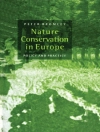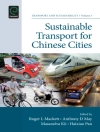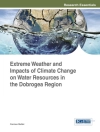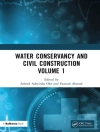The protection of our environment is one of the major problems in the society. More and more important physical and chemical mechanisms are to be added to the air pollution models. Moreover, new reliable and robust control strategies for keeping the pollution caused by harmful compounds under certain safe levels have to be developed and used in a routine way. Well based and correctly analyzed large mathematical models can successfully be used to solve this task. The use of such models leads to the treatment of huge computational tasks. The efficient solution of such problems requires combined research from specialists working in different fields. The aim of the NATO Advanced Research Workshop (NATO ARW) entitled “Advances in Air Pollution Modeling for Environmental Security” was to invite specialists from all areas related to large-scale air pollution modeling and to exchange information and plans for future actions towards improving the reliability and the scope of application of the existing air pollution models and tools. This ARW was planned to be an interdisciplinary event, which provided a forum for discussions between physicists, meteorologists, chemists, computer scientists and specialists in numerical analysis about different ways for improving the performance and the quality of the results of different air pollution models.
Tabella dei contenuti
Mathematical Modeling of the Regional-Scale Variability of Gaseous Species and Aerosols in the Atmosphere.- Air Pollution Modeling in Action.- Advances in Urban Meteorology Modelling.- Modelling Studies on the Concentration and Deposition of Air Pollutants in East-Central Europe.- Estimation of the Exchange of Sulphur Pollution in Southeast Europe.- Implementing the Trajectory-Grid Transport Algorithm in an Air Quality Model.- Estimation of Air Pollution Parameters Using Artificial Neural Networks.- Some Aspects of Interaction Between Operator Splitting Procedures and Numerical Methods.- Mathematical Aspects of Data Assimilation for Atmospheric Chemistry Models.- Fighting the Great Challenges in Large-Scale Environmental Modelling.- Challenges in Using Splitting Techniques for Large-Scale Environmental Modeling.- Simulation of Liberation and Dispersion of Radon from a Waste Disposal.- Methods of Efficient Modeling and Forecasting Regional Atmospheric Processes.- Numerical Forecast of Air Pollution — Advances and Problems.- Alternative Techniques for Studying / Modeling the Air Pollution Level.- Application of Functions of Influence in Air Pollution Problems.- Long-Term Calculations with a Comprehensive Nested Hemispheric Air Pollution Transport Model.- Dispersion Modelling for Environmental Security: Principles and Their Application in the Russian Regulatory Guideline on Accidental Releases.- Higher Order Non-Conforming FEM Up-Winding.- Emission Control in Single Species Air Pollution Problems.- A New Operator Splitting Method and Its Numerical Investigation.- Advances in Urban Dispersion Modelling.- Internet-Based Management of Environmental Simulation Tasks.- Air Pollution Assessment Inside and Around Iron Ore Quarries.- Data Assimilation of Radionuclides at Smalland Regional Scale.- The Impact of Sea Breeze on Air Quality in Athens Area.- Developments and Applications in Urban Air Pollution Modelling.- Demands for Modelling by Forecasting Ozone Concentration in Western Slovenia.- A Pilot System for Environmental Impact Assessment of Pollution Caused by Urban Development and Urban Air Pollution Forecast.- The Use of MM5-CMAQ Air Pollution Modelling System for Real-Time and Forecasted Air Quality Impact of Industrial Emissions.- Regulatory Modelling Activity in Hungary.- Creation and Testing of Flux-Type Advection Schemes for Air Pollution Modeling Application.- Bulgarian Emergency Response System: Description and Ensemble Performance.- Global and Regional Aerosol Modelling: A Picture Over Europe.- The ABL Models Yordan and Yorcon — Top-Down and Bottom-Up Approaches for Air Pollution Applications.- Major Conclusions from the Discussions.












